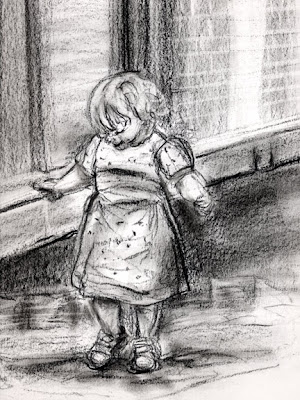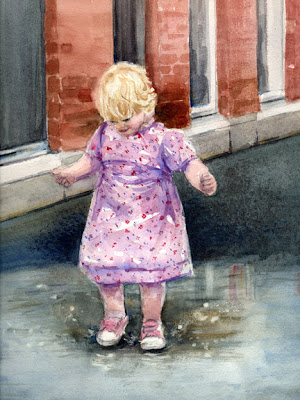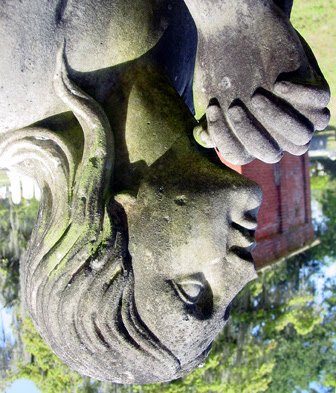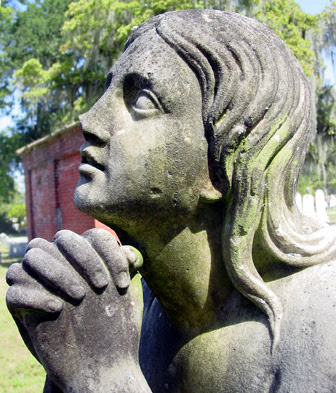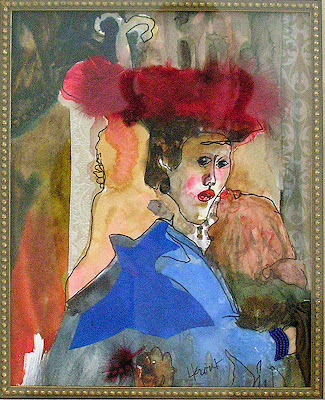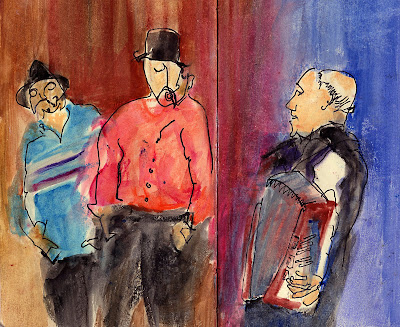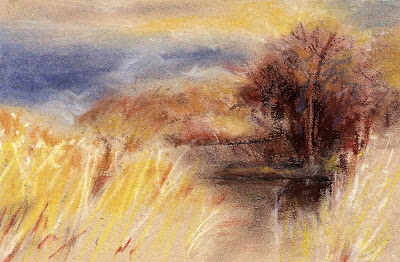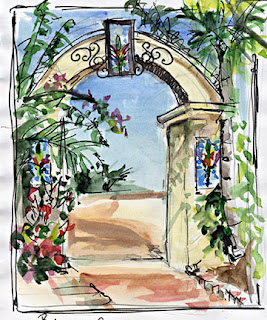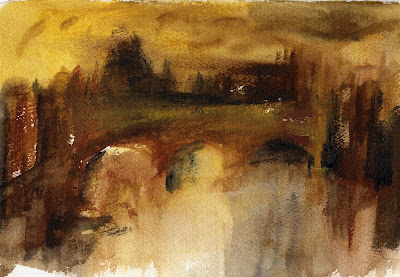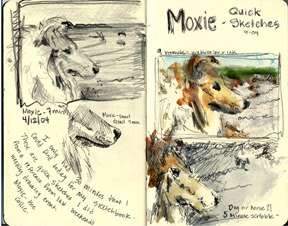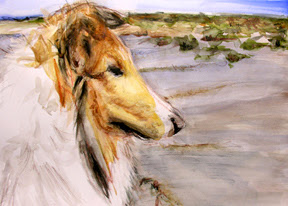

Today's mini-challenge in the Art Inspiration Every Day blog is to try your hand at sketching in public. This is the final mini-challenge our our week devoted to creating and keeping an art journal. Tune in tomorrow for a whole new weekly theme!
I hope that you have decided that keeping an art journal is a beneficial practice, and will continue to work in your art journal as we explore new weekly themes and daily challenges. You may want to do future challenges (or as many challenges as you are able) in your new sketch journal that we have begun together this past week. If you are just joining in, just start with us wherever we are. You can go back later and try some of the past themes and challenges as you wish, but don't get hung up on doing it all. The idea is just to start in wherever we are, and you will begin to make art a part of your daily life as you move forward with the exercises.
Sketching in public is a great way to fit art in with your usual daily routine. Sketching in public can happen anywhere- at a coffeeshop, restaurant or food court, at an outdoor event (like a market or festival), in your car when you are waiting to meet someone or even just sitting on a bench at the park.
I usually like to sketch unobserved, so will share my tricks with you to remain anonymous. I like my "sketching in public" sketchbook to be small and to look like a regular book. That way, people will just assume that I am reading or writing in a journal and will not become self-conscious, like they might if they knew that I was drawing them. I also take a small drawing kit with me, which contains a Conte' pencil, a regular drawing pencil as well as a water-soluble drawing pencil, a Pigma Micron .05 pen or similar, and an eraser.
Depending on where I am and what I think I can get away with, I might even add watercolor washes while I am there, or at least add a bit of water to a sketch where I have utilized a water-soluble graphite pencil for the drawing. For this, you need a handy-dandy travel brush (which you can find at the larger art stores- try Dick Blick, Daniel Smith or Jerry's Artarama, and search for "travel brush."
A pocket-style watercolor palette is great to have, as well. Some travel watercolor sets even have a little container included for water. I know that Winsor-Newton makes a nice one, and as an alternative, you can make your own if you buy a empty plastic palette and fill with the tube watercolors. (Just make sure you let the paints dry in the pan sections for a few days before folding it up and taking it out with you, or you will have a mess!)
Select a place to sit where you can blend in with the background. If you are going to sketch in a coffee shop, choose a table along the wall or in a corner, preferably a few tables away from others. Make sure you order something, and wait a few minutes before you pull out your gear. Take out only your sketchbook and one writing instrument. If you get the cap-style eraser, you can stick the eraser right on the end of your drawing pencil, so that you don't have to have a lot of things out on your table to draw attention to you.
Try to begin sketching the entire scene, paying NO attention to detail at first. People will move, so just sketch the form in quickly and add detail as you have time. That way, if they get up and walk away, you will still have something that looks pretty good. If you start working on the eye for five minutes, after you have sketched in the whole scene, you will end up with a weird-looking drawing of a loosely sketched person with one detailed eye, so the idea is to build up the detail in your sketch fairly uniformly. Once your sketch is to a certain point, if the person is still there, you can decide to make a focal point of their hands or face, and put more detail your area of choice, but wait until your drawing has enough detail overall before zooming in on an area to detail. As I have mentioned in past posts, write some info about your scene, your mood, the date or a bit of prose or poetry near your sketches that you have made in public.
I have included a few examples of a few sketches I have done in public places. As these are not, don't expect masterpieces when you are out sketching in public. You will be moving fast, and the purpose is the PROCESS, not the product. The sketch at the top of the page was done in less than ten minutes total while I was on a job and I had a quick break. Another sketch (just below it) doesn't have any people or animals in it, but was something to do while I waited in an empty waiting room prior to an appointment, and the last sketch (at the bottom of the post) was done at a family gathering, so it was only a little "in public"-a good starting point if you are nervous about sketching in public. Animals move a lot, so it is also good practice to work with them, because you never know when they will change positions, which keeps you on your toes and working quickly.
Learn to take your sketchbook with you EVERYWHERE! You will be so surprised at the times you will have to sketch in public, and the 15 minute bits of time that will present yourself an opportunity to draw. The more you draw, the better you will get!
If you are shy at first about sketching in public, sit in your parked car and observe people out of the window. Try sketching that way first. But don't wait too long before going out in public to sketch. You will love the practice and the whole idea of sketching unobserved. Be a "secret agent" for art!



